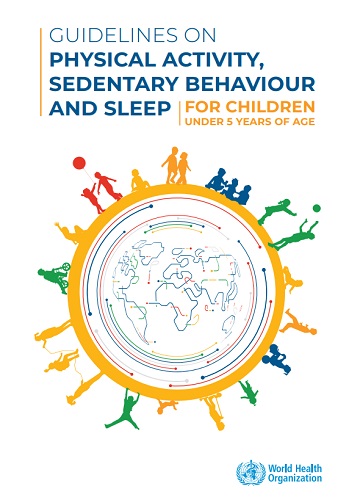T/TAS News and Updates
WHO Issues Physical Activity Guidelines For Children Under Five Years Old
- T/TAS at WKU
- Thursday, April 25th, 2019

According to the World Health Organization (WHO), children under 5 years of age should be physically active several times a day in a variety of ways, not be physically restrained (e.g. strollers, high chairs) for long periods of time, and get appropriate lengths of good quality sleep (including naps).
This comes from the newly issued Guidelines on Physical Activity, Sedentary Behaviour, and Sleep for Children Under 5 Years of Age, released on April 24, 2019.
J. Christopher Watkins, Executive Director of Head Start Training and Technical Assistance Services at Western Kentucky University says, “This information checks a lot of boxes in the Head Start and Early Head Start World: parent education, child development, children’s mental health, and children’s physical development. With so many service areas impacted by this study, programs will find it useful to review this important article.” This research-based study focuses entirely on the Head Start/Early Head Start (HS/EHS) target age group, and provides practical recommendations for child care center directors, teachers, parents and community partners.
Recommendations at a glance:
Infants (less than 1 year) should:
- Be physically active several times a day in a variety of ways, particularly through interactive floor-based play; more is better. For those not yet mobile, this includes at least 30 minutes in prone position (tummy time) spread throughout the day while awake.
- Not be restrained for more than 1 hour at a time (e.g. prams/strollers, high chairs, or strapped on a caregiver’s back). Screen time is not recommended. When sedentary, engaging in reading and storytelling with a caregiver is encouraged.
- Have 14–17h (0–3 months of age) or 12–16h (4–11 months of age) of good quality sleep, including naps.
Children 1-2 years of age should:
- Spend at least 180 minutes in a variety of types of physical activities at any intensity, including moderate-to-vigorous-intensity physical activity, spread throughout the day; more is better.
- Not be restrained for more than 1 hour at a time (e.g., prams/strollers, high chairs, or strapped on a caregiver’s back) or sit for extended periods of time. For 1-year-olds, sedentary screen time (such as watching TV or videos, playing computer games) is not recommended. For those aged 2 years, sedentary screen time should be no more than 1 hour; less is better. When sedentary, engaging in reading and storytelling with a caregiver is encouraged.
- Have 11-14 hours of good quality sleep, including naps, with regular sleep and wake-up times.
Children 3-4 years of age should:
- Spend at least 180 minutes in a variety of types of physical activities at any intensity, of which at least 60 minutes is moderate- to vigorous intensity physical activity, spread throughout the day; more is better.
- Not be restrained for more than 1 hour at a time (e.g., prams/strollers) or sit for extended periods of time. Sedentary screen time should be no more than 1 hour; less is better. When sedentary, engaging in reading and storytelling with a caregiver is encouraged.
- Have 10–13h of good quality sleep, which may include a nap, with regular sleep and wake-up times.
The guidelines are intended to fill in a research gap in a previous (2010) WHO guideline release, as children under 5 years of age were not included . A WHO panel of global experts from more than 12 countries, representing 7 continents, developed these guidelines for use by policy makers, NGOs, early childhood development services, and those providing advice and guidance to caregivers of children.
Read the complete WHO article HERE.
_________________________
J. Christopher Watkins, Executive Director
Training & Technical Assistance Services (T/TAS)
Western Kentucky University
800.882.7482
www.ttas.org
ttas.info@wku.edu
Advancing knowledge within early learning communities
Some of the links on this page may require additional software to view.
